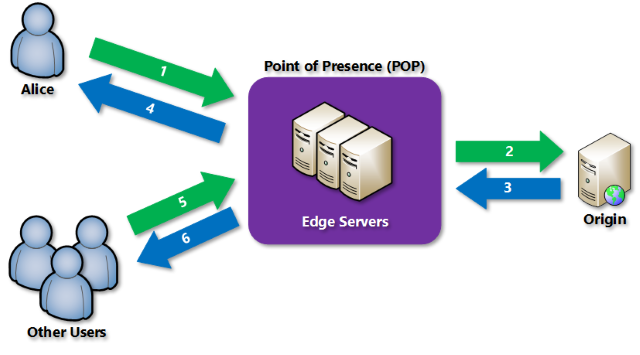- CDN is a distributed network of servers that can efficiently deliver web content to users.
- CDNs store cached content on edge servers in point-of-presence (POP) locations that are close to end users, to minimize latency.
- Azure CDN offers developers a global solution for rapidly delivering high-bandwidth content to users by caching their content at strategically placed physical nodes across the world.
- Azure CDN can also accelerate dynamic content, which cannot be cached, by leveraging various network optimizations using CDN POPs.
- For example, route optimization to bypass Border Gateway Protocol (BGP).
Workflow
- A user requests a file (asset) by using a URL (
<endpoint>.azureedge.net).
- This name can be an endpoint host name or a custom domain.
- If no edge servers in the POP have the file in their cache, the POP requests the file from the origin server.
- The origin server can be an Azure Web App, Azure Cloud Service, Azure Storage, or any public web server.
- The origin server returns the file to an edge server in the POP.
- An edge server in the POP caches the file and returns the file to the original requestor.
- The file is cached on the edge server in the POP until the time-to-live (TTL) specified by its HTTP headers expires.
- Additional users can then request the same file using the same URL and can also be directed to the same POP.
- If the TTL for the file hasn't expired, the POP edge server returns the file directly from the cache.

Azure CDN Features

